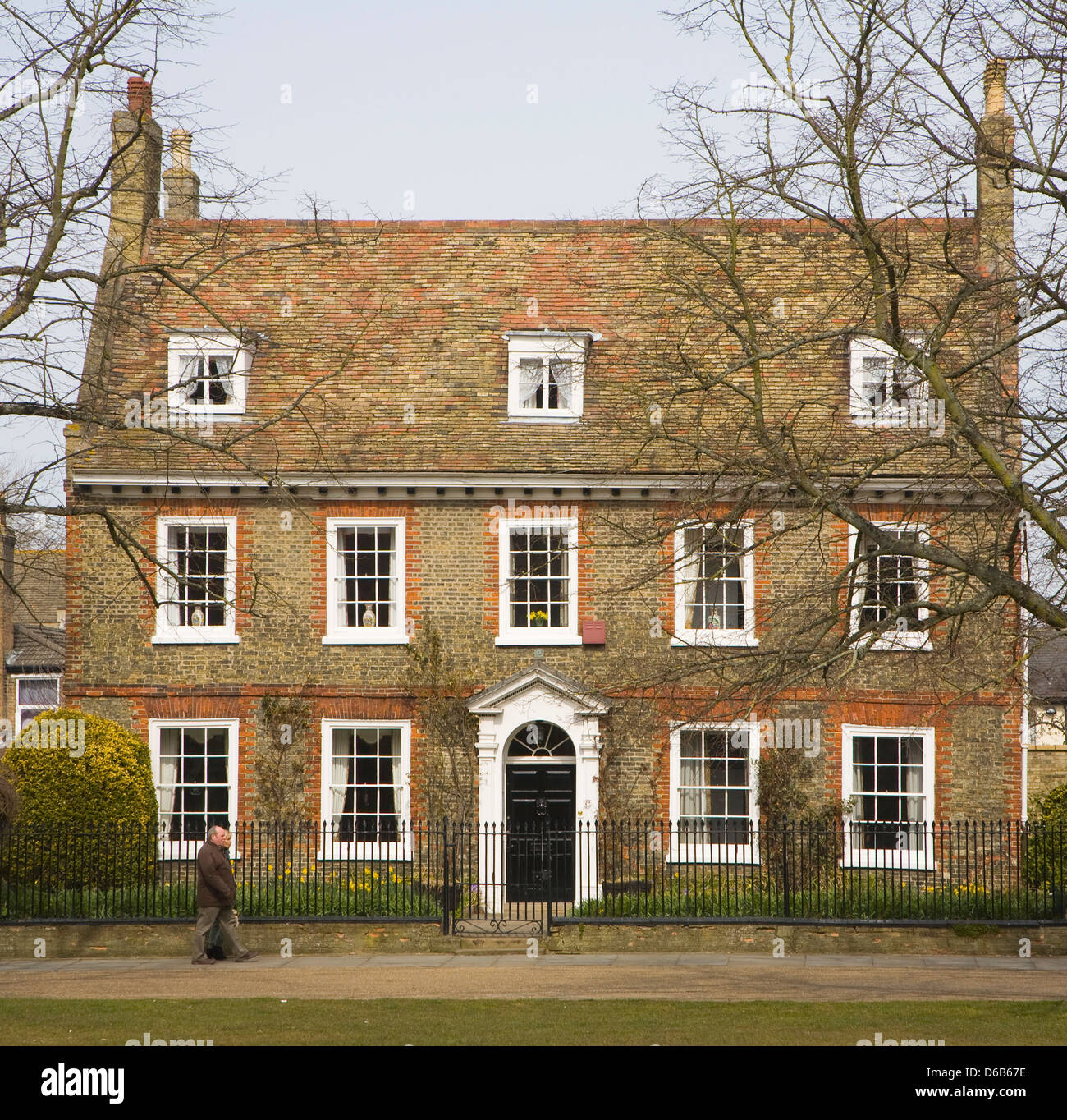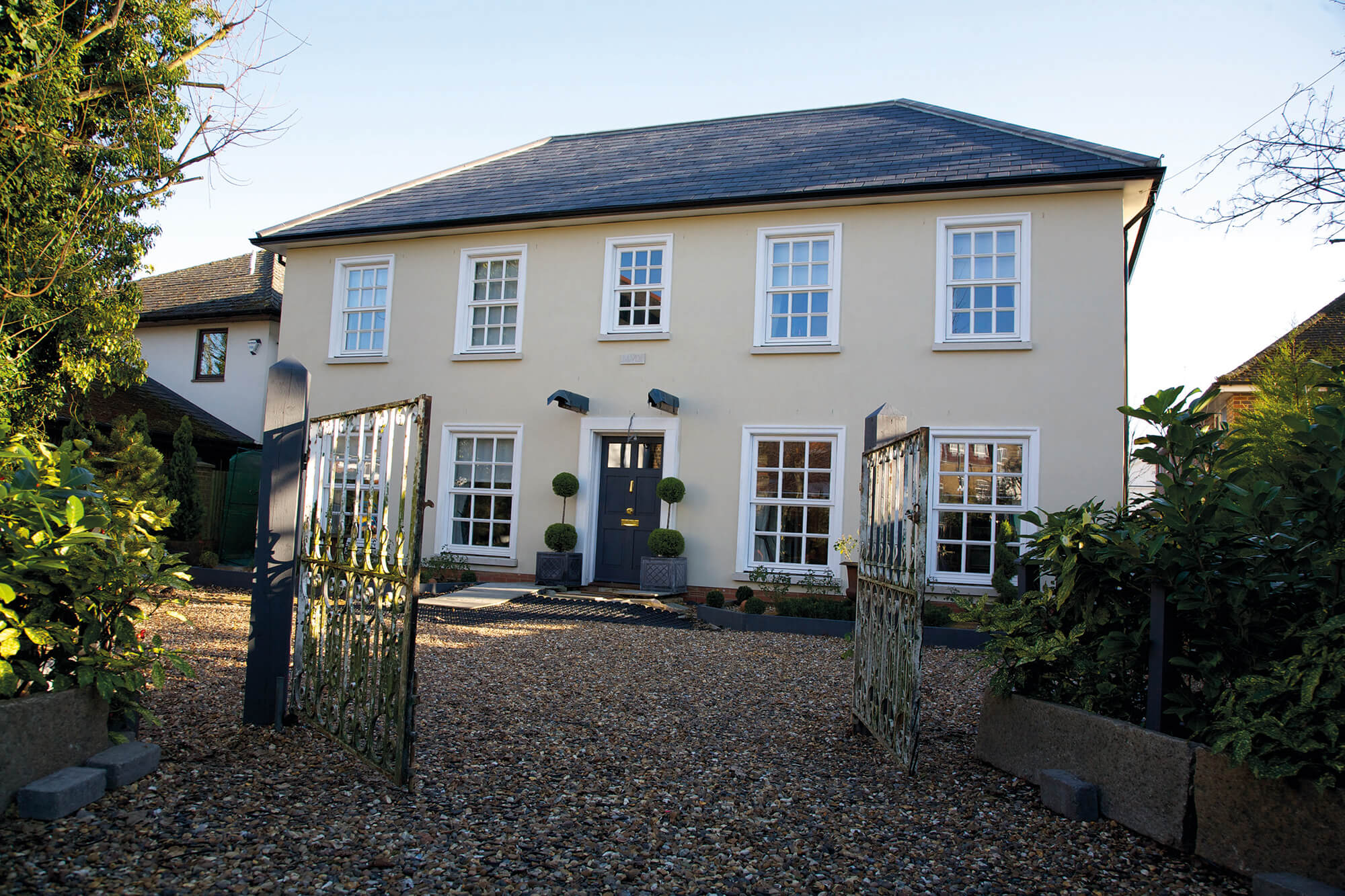15 wonderful Georgian homes
Table Of Content

Such guides were critical in propagating the Georgian-style homes across the territories. Generally, design guides concentrated on the architectural specifics for frames, doorways, chimneys, and molding components, which the architect accepted or changed. American Colonists could considerably improve the attractiveness of their basic structures with a few expert embellishments. These buildings have a special look with front doors centered and windows evenly spaced on both sides.
Georgian House Plans
Victorian homes, however, frequently exhibit asymmetrical façades and irregular floor plans. Georgian houses are frequently voted the most architecturally desirable style of property in the UK. Symmetry and proportion are at the heart of the design of Georgian homes, mimicking the classical architecture of Greece and Rome. Decoration and ornamentation is usually understated, and the large, open rooms create a great sense of airiness, light and luxury.
These Georgian Homes Are Elegant Abodes in Westchester - Westchester Magazine
These Georgian Homes Are Elegant Abodes in Westchester.
Posted: Tue, 21 Nov 2023 08:00:00 GMT [source]
Find some more inspiration from Period Living
Georgian-style house in D.C. on the market for $5.5 million - The Washington Post
Georgian-style house in D.C. on the market for $5.5 million.
Posted: Thu, 03 Aug 2023 07:00:00 GMT [source]
This is really an interior/exterior feature, but what makes sash windows special is how they operate from the inside. Sash windows utilize a mechanism of weights and pulleys in order to slide up and down. Georgian homes also featured and popularized the use of internal shutters and curtains to promote privacy and to better keep heat in. Each sash window was likewise multi-paned and consisted of between 6 to 20 panes. One of the first things you will notice when you step inside a Georgian home is just how high the ceilings are. The whole structure of the Georgian home is built to be nicely ratio-ed, but those large classical Roman buildings were a big inspiration to Georgian architects and builders.
Exterior Style Features
Grand examples—of wood rather than brick as in Virginia—became more common in the North only after 1750. The outside is distinguished by the controlled rigidity and regular geometric shape of blocks of wood and glass panels, but the inside is a display of finely carved craftsmanship in flowing whirling motifs. Some of the best wallpaper from the Georgian era, preserved in its original place, complements the woodworking in the two-story stairway and the first-floor great chambers, also referred to as the State Dining Hall. The hand-painted images of Roman ruins in grey hues on 21 by 27-inch sheets are placed in compartments surrounded by curved Rococo-styled frames from the mid-18th century. Scenes of churches, urns, and statues became a dominating motif in architecture in the late 1740s, influenced by discoveries at the historic towns of Pompeii and Herculaneum. Colonel Jeremiah Lee, one of the wealthiest traders and ship operators in the state of Massachusetts, lavished money on his house.
Georgian-Inspired Design Ideas
For example, simple but patterned wallpaper, dishes, vases, and furnishings that embrace the beauty and care of Puritan craftsmanship that are gorgeous but not over-the-top. Again, brick is the number one material used to create Georgian houses around the world. Cared for by the National Trust for Scotland.Discover this grand 18th-century town house that was at the heart of Edinburgh’s New Town development. Admire the stunning collections of period furniture, paintings, porcelain, silver and glass, and gain a fascinating insight into both the upstairs and downstairs elements of 18th-century society.
Georgian vs. Colonial vs. Victorian Architecture
If a town house was three bays wide (in this instance, bay means window), then the space occupied by the first and second floor windows should form a square. The distance between windows is all over the place, possibly due to renovations at one time or another. Not surprisingly, interpretations of the Georgian style tended to vary with locale. In northern states, it was common to use wood with clapboard or shingle cladding in Georgian homes and buildings.

Formal rooms such as the entry foyers, living room, dining room, serving pantries, libraries, studies, and formal powder rooms have changed the least. They are generally located in a prominent central location close to the entry hall and main staircase and to each other. A new sunroom (left) and drawing room (right) in a CHA-designed renovation and addition to an American Brick Georgian. The sunroom features archtop doors that lead out to the estate’s gardens and are enframed with a latticed frieze and pilasters evoking a feeling of a garden room that is as much outdoors as in.
Why do Georgian houses have high ceilings?
Emerged in the 18th century, it features distinct characteristics such as sash windows aligned in horizontal bands, hip roofs, stucco facades, and classical details often influenced by the ancient Greek orders. Colonial architecture includes styles characterized by simple, traditional design with minimal embellishments. Georgian and late Georgian architecture, which are a style of Colonial architecture, are characterized by generously proportioned rooms in three-story residences where servants would live on the smaller third floor. Victorian architecture is marked by its unapologetic devotion to ornament and flourish and its ornate maximalist interior design. In addition to being used in a variety of housing types, Georgian architecture was a popular style for churches and public buildings.
Colonial Revival houses, like Georgian, are typically two to three stories, boasting a symmetrical and rectangular design. The composition of exterior facades typically features an ornate central front door with some type of classical design. Simpler examples of these have classical surrounds with pediments, arched, broken pediments, or ogee caps, and glazed transom lites overhead. Other entryways may also have glazed and paneled sidelights, while other later examples might include a covered portico and, in some late Georgian revival homes, a porte-cochere.
Georgian architects use glazing bars to achieve an illusion of smaller panes in the upper and lower sash. The archetypal Georgian church is St Martin-in-the-Fields in London (1720), by Gibbs, who boldly added to the classical temple façade at the west end a large steeple on top of a tower, set back slightly from the main frontage. This formula shocked purists and foreigners, but became accepted and was very widely emulated, at home and in the colonies,[36] for example at St Andrew's Church, Chennai in India. Wooden furniture with the claw and ball foot were all the rage during this style’s era and many Georgian homes were outfitted with locally sourced wooden furnishings, such as those offered by the growing Chippendale company. While authentic Georgian furniture is understandably expensive, there are plenty of commercially produced options available for almost any budget. Instead, the door of a Georgian home is simple but paneled with a transom window above it.
To install a clerestory window, an architect has to consider the size and shading. It is also essential to consider the measurements between the soffit and the window. William Henry Playfair designed and completed the construction of the Royal Scottish Academy in 1826. In 1912, sculptor William Thomas added a statue of Queen Victoria on the top of the Royal Scottish Academy.
Elements like decorative moldings, brick facades, and balanced windows are common in current homes thanks to Georgian style’s impact. This architecture's timeless appeal makes it popular for new buildings wanting a touch of elegance without losing modern comforts. Public buildings in Georgian architecture stand out for their grand style and careful design. Many town halls, libraries, and courthouses built during the Georgian period still show these classic features today. Georgian architecture has remained a popular design in most English-speaking countries since the 18th century.
Colonial architecture emerged under colonial rule in the United States in the 1600s and 1700s, while the Georgian and late Georgian period came from 1714 to 1830, and 1830 to 1837, respectively. Victorian architecture came just after, constructed during the reign of Queen Victoria over the United Kingdom from 1837 to 1901. Neo-Georgian houses, also known as Colonial Revival houses, can be found across the US,' says Christina. It was completed in 1735 and was home to Britain’s first prime minister, Robert Walpole.
Frances Greenway designed this three-story Georgian building with a capacity to host up to 1400 convicts. This exemplary example of Georgian architecture in Australia is today a museum registered on the UNESCO World Heritage Sites list. Earlier buildings had large windows consisting of six or eight small panes of glass. Having six or eight panes in the top sash and the same number in the lower sash was a popular style.
Modern AV and security systems require extensive networks of wires, sensors, and control devices. Layered on top of this is a domestic electrical grid to power and control almost all the systems in today’s homes. Incorporating all this seamlessly into the home so that everything works seamlessly and conveniently and is visually minimally intrusive involves a great deal of forethought and planning.
In truth, true Georgian decor nicely mixed several different cultures within one style and was certainly one of the first design styles to do so. Stone materials were primarily used in Georgian house constructions in the Mid-Atlantic areas. Bricks were by far and large the most popular type of building material for Georgian homes and other buildings, but there are also some excellent versions that are comprised of stone. The above-featured image is a poster-child Georgian home as we know them in the US… symmetrical, red brick (not all have red brick mind you), imposing. The house had been loved but not well maintained, and one of the couple’s first tasks was to hack back the ivy that obscured the walls and windows.
Comments
Post a Comment